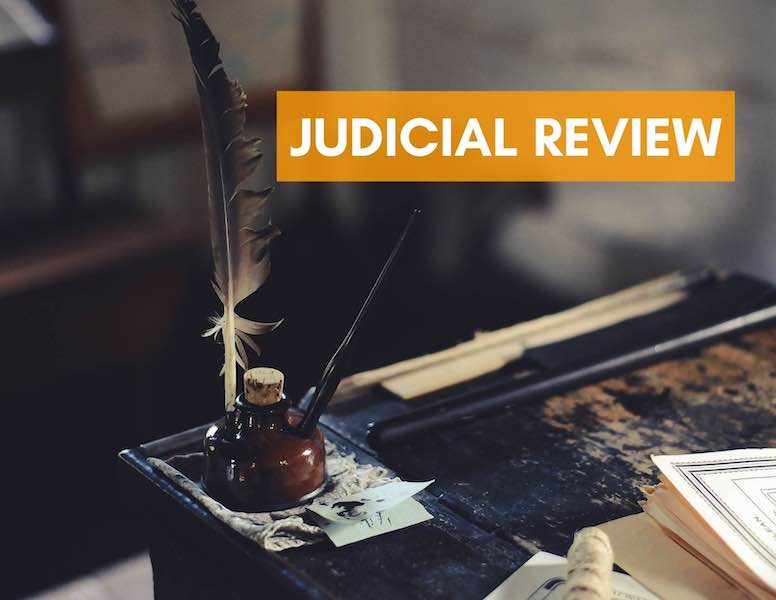Judicial Review: Are you ‘adversely affected’ by the public authorities’ decision?
by Phoebe Loi Yean Wei ~ 5 July 2021
Introduction
Lately, the phrase “judicial review” has popped up in the news rather frequently and the context in which it appears are often in matters concerning public interest. Examples of such matters include the legal action brought by the residents of Taman Tun Dr Ismail to challenge the decision made by the Mayor of Kuala Lumpur (who approved a proposed development of 8 blocks of high-rise luxury condominium on the part of the well-known public park, Taman Rimba Kiara) and the recent Undi18 youth movement which sought for a review of the Election Commission’s decision to delay the implementation of a lowered voting age.
In essence, an application for judicial review is a mechanism which is utilized to review/examine the decisions and actions of public bodies. It serves as a check and balance for executive and legislative actions by ensuring that public bodies act within the bounds permissible by law.
Previously, the courts will usually look into the decision-making process and not at the merits of the decision itself. However, the law has developed to allow a decision to be challenged on the grounds of illegality and irrationality – which permits the courts to scrutinize the decision not only for process, but also for substance. Therefore, if a public authority acts (1) irrationally, (2) unreasonably, (3) unfairly (procedural impropriety) and/or (4) beyond the limits of its powers under the law (illegality), the court can intervene by issuing the necessary orders to correct these problems.
Under Order 53 Rule 2(4) of the Rules of Court 2012 (“Rules of Court”) and Schedule of the Courts of Judicature Act 1964, any person who is ‘adversely affected’ by the decision, action or omission of a public authority is entitled to file an application for judicial review and seek for any of the following reliefs/orders:-
1. Certiorari – an order to quash the decision (including administrative actions) made by a tribunal or public authority.
2. Mandamus – an order to compel the performance of a legal duty imposed by law.
3. Prohibition – an order issued to prevent a public authority from proceeding without jurisdiction.
4. Quo warranto – a writ issued to question a public decision-taker’s authority to hold a particular public office by calling upon that person to show the court under what authority he holds that office.
5. Monetary compensation – compensation that a person is entitled to receive from the State for the breach of his fundamental right by any branch of Government, which is also known as “constitutional compensation”.
6. Declaration.
7. Injunction.
It must be highlighted that Order 53 Rule 2(4) of the Rules of Court only permits a person who is ‘adversely affected’ by the conduct of public authorities to file a judicial review application. These persons are said to have the locus standi (or legal standing) to pursue the action and such a requirement ensures that only those with legitimate legal grievances will be permitted to proceed with the challenge.
This article will discuss the test that is applied by the courts to determine whether a party has the necessary locus standi to file an application for Judicial Review.
The Test for Locus Standi – are you ‘adversely affected’?
There are two types of locus standi under the common law, namely, “threshold locus standi” and “substantive locus standi”. Threshold locus standi deals with an applicant’s legal standing to commence the proceedings in court, whereas substantive locus standi examines the merits of the case and whether the applicant is entitled to the reliefs sought.
Previously, an applicant for judicial review was required to establish that there was an infringement of a private right resulting in special damages (in addition to the violation of a public right), in order to have the necessary locus standi to pursue the action. In other words, the previous legal position required both threshold and substantive locus standi to be established for an applicant to be entitled to pursue an action for judicial review.
However, a major change in the law occurred when the Federal Court delivered its judgment in Malaysian Trade Union Congress & Ors v Menteri Tenaga, Air dan Komunikasi & Anor [2014] 3 MLJ 145 (“MTUC”).
In MTUC, the Federal Court held that there was only a single test for locus standi in judicial review applications under Order 53 of the Rules of Court, which is that an applicant only needs to show that he is ‘adversely affected’ by the decision of the public authority. To pass this ‘adversely affected’ test, an applicant will need to show that he has a ‘real and genuine interest’ in the subject matter of the application:-
“[58] … Therefore, in determining the locus standi to sue, the court has to exercise caution in applying the English cases. In our view for an applicant to pass the 'adversely affected' test, the applicant has to at least show he has a real and genuine interest in the subject matter. It is not necessary for the applicant to establish infringement of a private right or the suffering of special damage.”
The MTUC decision liberalised the rules on locus standi. In reaching its decision, the Federal Court adopted the approach taken by the Court of Appeal in QSR Brands Bhd v Suruhanjaya Sekuriti & Anor [2006] 3 MLJ 164 which explained that rules of court should not be interpreted in such a way as to result in unfairness or produce a manifest injustice. As such, a flexible approach ought to be taken here.
An application for judicial review will have to demonstrate that it falls within the factual spectrum that is covered by the words ‘adversely affected’. In this regard, the Court in QSR Brands gave examples of situations where an applicant may be adversely affected:-
1. Where an applicant has an obviously sufficient personal interest in the legality of the matter being reviewed. This includes cases where the complaint is that a fundamental right such as the right to life or personal liberty or property has been, is being or is about to be infringed. In all such cases, the court must, for the interest of justice or as a matter of right grant the applicant the right to proceed with the action.
2. Cases which are in the nature of a public interest litigation. Public interest litigation is usually entertained by a court for the purpose of redressing public injury, enforcing public duty, protecting social rights and vindicating public interest. In other words, the real purpose here is the vindication of the rule of law, effective access to justice by the economically weaker class and meaningful realisation of fundamental rights. The orders issued by the courts in public interest litigation are meant for the betterment of the society at large and not for benefiting any individual.
Application of the Test
An example of how the test for ‘adversely affected’ is applied can be seen from the Court of Appeal’s judgment of Perbadanan Pengurusan Trellises & Ors v Datuk Bandar Kuala Lumpur & Ors [2021] 3 MLJ 1 – a case which attracted wide media attention and public interest. Perbadanan Pengurusan Trellises concerned a decision made by the Mayor of Kuala Lumpur to grant a development order. Vide the development order, the Datuk Bandar had approved the proposed development of luxury condominiums on Taman Rimba Kiara, a public park.
In response, residents from Taman Tun Dr Ismail (consisting of a Residents’ Association, Management Corporations, Joint Management Body and 3 individuals) filed a judicial review application seeking for an order of certiorari to quash the decision of the Mayor. One of the issues raised in this case was whether these parties had the locus standi to file the judicial review application.
In a unanimous decision, the Court of Appeal applied the test laid down in MTUC and held that all of the applicants had real and genuine interests in the subject matter of the judicial review. It was clear that the proposed development on Taman Rimba Kiara would have an impact on the applicants in various ways: from the use of their properties, value of such properties, to the traffic or egress and ingress in relation to their properties and the impact directly on the density of population in the area. As such, the applicants clearly satisfied the test of being ‘adversely affected’. The development order issued by the Mayor of Kuala Lumpur was also quashed due to various other reasons. To read more about the Taman Rimba Kiara case, please refer to the article here.
Conclusion
With great power comes great responsibility. Whenever public bodies exercise the powers and discretion conferred on them, there is a legitimate expectation by the public that they will carry out their duty and exercise these powers fairly, reasonably and in accordance with the perimeters set by the law. When a public body commits an error or wrong which falls within the four heads described above (illegality, irrationality, unreasonableness and procedural impropriety), it makes sense that an aggrieved party would want to turn to the courts to seek for the necessary judicial remedies in order to right the wrongs.
As such, given that judicial review proceedings are brought in the area of public law for the purposes of attending to grievances of abuse or complaints of wrongs by public authorities, the rules of court must be read more liberally and with greater flexibility in order to offer redress of public injury. All persons who are adversely affected by the decisions or acts of public authorities must be allowed to challenge the same in a court of law.

